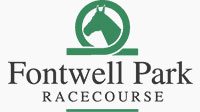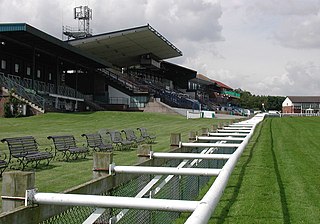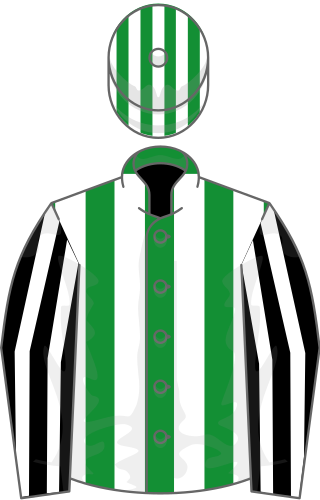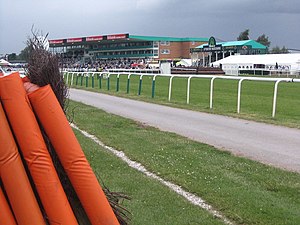History
The racecourse was built in 1907 and opened by a company formed to take over the interests and licence of Keele Park racecourse, which had recently ceased to operate. There were 5 days of racing in 1907, 2 in May, 2 in October and 1 in December. According to 'The Racecourse of Great Britain and Ireland' guide "the meeting is largely patronised by the nobility and gentry and sportsmen in the county there being 100 members already subscribed to the Club". Horse racing was suspended throughout the country in 1914 during the First World War.
Racing resumed in 1921, although the first meeting had to be abandoned on account of bad weather. 4 meetings a year were held, in April, May, September and October, and although the course never broke records, there were always good fields, big crowds, and a small but steady profit for the Racecourse Company. During the Second World War, the course was requisitioned by the War Department and no racing took place.
In 1949, the Uttoxeter Urban Council appointed a committee to investigate the non-resumption of racing after the war. Part of the course consisted of a four-acre field which the Racecourse Company did not own, but only leased from a farmer, who was reluctant to lease or sell it to them at a sum which they could afford. It appeared the company would have to go into liquidation and the racecourse would disappear. After much debate, the racecourse re-opened on 12 April 1952. With a crowd of 12,000, the meeting was successful enough for the organisers to be almost overwhelmed. The Uttoxeter Urban Council had come to the rescue of the course and their decision to buy it was upheld by the community.
- 1966 Popular, but without the funds to modernise and rebuild as the Executive would have wished, in 1966 the course took its place in the modernisation lists of the Horserace Betting Levy Board. A scheme was drawn up and approved whereby £167,000 would be spent in giving the course its long overdue facelift, Mrs.Olive Davis a local bookmaker and chairman of Uttoxeter council along with MrMr John Kenny MBE and clerk to the course at both Uttoxeter and Stratford instigated the facelift and pursued the levy board for the funds. Olive became Chairman of Uttoxeter Racecourse, and was known as the Mrs Toppam of Uttoxeter, after the only other female racecourse chairman in England at the time ( Mrs Topham of Anitree). Olive Davis then continued to promote the race course on non-race days in the newly built Paddock Suite, which became the main venue in Uttoxeter for, weddings, Balls, Disco parties, and private functions. Laying the foundations fortoday's popularity for the racecourse as a place to hold an event. Mrs Olive Davis was also known for her support and pioneering activities in the crusade to get ladies accepted as jockeys. Her husband Raymond Davis was a well known national Hunt Jockey and her father was Arthur Birch a renowned trainer. Olive died in 1999, but her dedication to Uttoxeter racecourse is the corner stone of its success today .
- 1967 Champion jockey Josh Gifford equalled Fred Winter's record of 121 winners in a season at Uttoxeter on 15 June, the very last meeting of the 1966–67 National Hunt term. The horse was five-year-old Jolly Signal trained by Earl Jones at Hednesford. Half an hour later Gifford broke the record when he rode Red Flush to a 10-lengths victory in the Ashbourne Handicap Chase.
- 1976 Rag Trade, owned by the flamboyant hairdresser Raymond 'Teasy Weasy' Bessone, won the Marston's Pedigree Midlands Grand National and followed-up by winning the Grand National at Aintree a few weeks later.
- 1982 Uttoxeter was again the decisive venue when John Francome, on John Edward's Buckmaster, gained his 800th overall winner and his 120th for the season to share the jump jockeys title with the sidelined Peter Scudamore.
- 1988 Sir Stanley Clarke CBE acquired Uttoxeter from East Staffordshire district council. Forming holding company Northern Racing, Clarke made a significant personal investment in facilities, including the creation of two new grandstands and a new paddock development.
- 1997 The Midlands National produced its most famous horse in Lord Gyllene, owned by Uttoxeter's chairman Sir Stanley Clarke. Lord Gyllene finished second to Seven Towers in the race but four weeks later recorded an historic victory in the Grand National at Aintree. His winning margin of 25 lengths was the most impressive in 20 years and he also recorded one of the fastest times in the race's history.
- 2002 History was made when Champion jockey AP McCoy became the winning-most National Hunt jockey of all time with his victory aboard Mighty Montefalco, marking his 1700th win.
- 2006 A fire broke out in a sponsorship van beside the grandstand. The grandstand, course and weighing room were evacuated. The crowd were sent out into the middle of the course away from blaze. No one was injured and racing was suspended for 1 hour and 40 minutes. The final race set off at 6.53 pm.
Name of Mascot is Utrotter as named by Emily-Kate Sanderson and Charlotte Waldie in 2005.

Flemington Racecourse is a major horse racing venue located in Melbourne, Victoria, Australia. It is most notable for hosting the Melbourne Cup, which is the world's richest handicap and the world's richest 3200-metre horse race. The racecourse is situated on low alluvial flats, next to the Maribyrnong River. The area was first used for horse racing in March 1840.
In horse racing in the United Kingdom, France and Republic of Ireland, National Hunt racing requires horses to jump fences and ditches. National Hunt racing in the UK is informally known as "jumps" and is divided into two major distinct branches: hurdles and steeplechases. Alongside these there are "bumpers", which are National Hunt flat races. In a hurdles race, the horses jump over obstacles called hurdles; in a steeplechase the horses jump over a variety of obstacles that can include plain fences, water jump or an open ditch. In the UK the biggest National Hunt events of the year are generally considered to be the Grand National and the Cheltenham Gold Cup.

Aintree Racecourse is a racecourse in Aintree, Metropolitan Borough of Sefton, Merseyside, England, bordering the city of Liverpool. The racecourse is the venue for the Grand National steeplechase, which takes place annually in April over three days. Aintree also holds meetings in May and June, October (Sunday), November and December.
Leicester Racecourse is a horse racing course in Oadby, Leicestershire, about three miles south of the city centre.

Newmarket Racecourse is a British Thoroughbred horse racing venue in Newmarket, Suffolk, comprising two individual racecourses: the Rowley Mile and the July Course. Newmarket is often referred to as the headquarters of British horseracing and is home to the largest cluster of training yards in the country and many key horse racing organisations, including Tattersalls, the National Horseracing Museum and the National Stud. Newmarket hosts two of the country's five Classic Races – the 1,000 Guineas and 2,000 Guineas, and numerous other Group races. In total, it hosts 9 of British racing's 36 annual Group 1 races.

Ayr Racecourse at Whitletts Road, Ayr, Scotland, was opened in 1907. There are courses for flat and for National Hunt racing.

Fontwell Park Racecourse is a horse racing course located in the village of Fontwell in West Sussex, England, owned by ARC Racing. It features an oval hurdles course.
The Coral Welsh Grand National is a Premier Handicap National Hunt steeplechase in Great Britain which is open to horses aged four years or older. It is run at Chepstow, Wales, over a distance of about 3 miles and 6½ furlongs, and during its running there are twenty-three fences to be jumped. It is a handicap race, and it is scheduled to take place each year on 27 December.

Cartmel Racecourse is a small national hunt racecourse in the village of Cartmel, now in the ceremonial county of Cumbria, historically in Lancashire. Nine racedays are held each year, starting on the Whit Holiday weekend at the end of May and ending on the August Bank Holiday weekend in August Bank Holidays.

Beverley Racecourse is a thoroughbred horse racing venue located in the town of Beverley in the East Riding of Yorkshire, England.
Chepstow Racecourse is a thoroughbred horse racing course located just north of the town of Chepstow in Monmouthshire, Wales, near the southern end of the Wye Valley and close to the border with England. It is one of 16 racecourses operated by the Arena Racing Company and is home of the richest race in Wales, the Coral Welsh Grand National.

Tony Dobbin is a retired Northern Irish National Hunt jockey who rode mainly in Great Britain. He rode the winner of the Grand National on Lord Gyllene in 1997 for owner Sir Stanley Clarke CBE, and won over 1,200 races during his career in the saddle. He was the regular stable jockey for Nicky Richards. He retired from racing on Thursday, 10 April 2008 riding the winner of his final race, Ballyvoge, at Carlisle Racecourse. He has assisted his wife, Rose Davidson, training racehorses since 2009.
Lord Gyllene was a New Zealand-bred racehorse whose greatest victory came in the 1997 Grand National at Aintree. He was trained by Steve Brookshaw for owner Sir Stanley Clarke CBE and ridden by Tony Dobbin. Lord Gyllene was retired by his owner in 2001 due to injury. He had a race record in the UK of 13 runs: won 4, second 5 and third once, as well as two wins from 23 starts in New Zealand. His final appearance in his homeland was a winning one, in a steeplechase at Te Rapa racecourse in Hamilton on 16 September 1995. That followed his second at Ellerslie to one of the great jumpers in New Zealand racing history, Sydney Jones, in the Pakuranga Hunt Cup, one of New Zealand's most prestigious jumping races.
The Champion Standard Open NH Flat Race is a Grade 2 National Hunt flat race in Great Britain which is open to horses aged from four to six years. It is run at Aintree over a distance of about 2 miles and 1 furlong, and it is scheduled to take place each year during the Grand National meeting in early April.

The 1998 Grand National was the 151st official renewal of the world-famous Grand National steeplechase that took place at Aintree near Liverpool, England, on 4 April 1998.

The 1997 Grand National was the 150th official running of the Grand National steeplechase held at Aintree near Liverpool. The race was scheduled to be run on Saturday 5 April 1997, but was postponed by two days to Monday 7 April after a Provisional Irish Republican Army (IRA) bomb threat forced the evacuation of the course.

Sir Stanley William Clarke, CBE, DL was an English businessman, property developer, horse racing enthusiast, and philanthropist.
Northern Racing was a private company that owned ten horse racing courses and one golf course in the United Kingdom. It was formed in 1998 by Sir Stanley Clarke CBE, and after being listed on the Alternative Investment Market, was owned privately by the Reuben Brothers. In 2012, it was merged with Arena Leisure to form Arena Racing Company
Woore Racecourse was an English National Hunt horse racing venue, situated in the village of Woore, in the northernmost corner of Shropshire, on the border with Cheshire and Staffordshire.
Mirabel Topham was chairman and managing director of Topham Ltd for 36 years to 1973 and owner of Aintree Racecourse in Liverpool, England, where the Grand National horse steeplechase is held. She was one of the colourful and controversial personalities in UK racing during this time.












